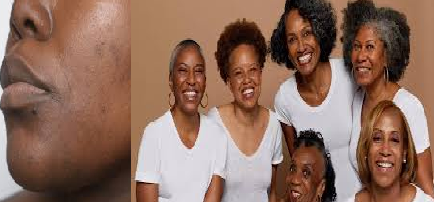The Three Major Causes of Skin Wrinkle You Ought to Know.

The Three Major Causes of Skin Wrinkle You Ought to Know.
Wrinkles emerge and become more pronounced as skin ages.
As early as age 25, you can begin to see the signs of aging.
The skin is slower in its ability to heal. Small abrasions and cuts take longer to disappear than they did in your teens.
Old cells are replaced more slowly.
As we reach our mid-forties, we begin to see more drastic changes in our skin as we experience hormone fluctuations.
Skin begins to thin and become more fragile and sensitive.
Read more: The 10 Principles of the Use of Cosmetics Everyone Should Know.
Having strong skin is a key factor in wrinkle prevention.
- The integrity of collagen and elastin compounds in the skin is most
- Collagen makes up 75 percent of our skin; it is the main structural component that gives our skin strength and elasticity.
- Elastin helps skin to return to its original position when it is poked or pinched.
- An accumulation of environmental factors damages the skin and causes wrinkles.
- Damage to collagen and elastin coils reduces the elasticity and strength of the skin.
- The skin will attempt to repair collagen and elastin damage if the proper nutrients are present and the rate of damage is not overwhelming.
- However, too few nutrients and too much damage can overwhelm the skin, causing wrinkles to form.
- Add in gravity, which causes jowls and drooping eyelids, and you have age wrinkles.
The Sun
- There are many factors that cause skin damage, but the primary cause of skin damage is excessive sun exposure.
- Ultraviolet radiation from the sun damages collagen fibers, causing a loss in skin strength and
- Ultraviolet radiation also leads to wrinkle formation by causing elastin to accumulate and clump in the skin.
Read more: The Basic Treatment Techniques of Sun-Damaged Skin
- Ultraviolet radiation enhances wrinkle formation in another way as well.
- Enzymes called metalloproteinases are produced when skin is exposed to ultraviolet radiation.
- Metalloproteinases normally remodel sun-injured skin by manufacturing collagen.
- If, however, an excess of metalloproteinases builds up (from too much sun exposure), the enzyme’s function changes from friend to foe and breaks down
- This collagen breakdown damages the skin’s structure, leaving it loose, weak, and wrinkly.
Free Radicals
- Wrinkles can result from free radical damage as well.
- Free radicals are unstable oxygen molecules that have only one electron instead of two (like stable electrons).
Read more: Symptom And Treatment Guide for Specific Photoaging Conditions.
- These single electrons will scavenge for another electron, stealing them from other molecules.
- These “robbed” molecules in turn become unstable and scavenge for a place to find their missing electrons.
- This cycle can damage cell function and alter genetic material.
- There are several factors that trigger this cascading process, including exposure to even small amounts of ultraviolet radiation in sunlight, smoking, and exposure to air pollution.
Hormones
- A third factor that may play a role in wrinkle formation is hormones.
- As we age, we experience fluctuations in our hormone
- Just as teenage acne is brought on by hormone changes, acne may occur in adult women during pregnancy and menopause.
- Such shifts in hormones can alter skin metabolism, including the metabolism of collagen and
- Changes in this metabolism can result in poor collagen and elastin formation, leading to wrinkle
- Menopause is of particular concern when it comes to wrinkles.
- Menopause involves a decrease in estrogen production in women.
Read more: Skin Problems Associated with Menopause and Birth Control Pills.
- It is tough to know which changes in the skin during menopause are due to hormones alone and which are the product of aging or environmental factors.
- Human research studies have not yet documented which skin changes are specifically caused by a decrease in estrogen, but animal studies show that a lack of estrogen can lower collagen levels by roughly 2 percent per year and reduce skin thickness by roughly 1 percent per Thus, it appears that maintaining estrogen levels in the skin may help reduce wrinkle formation during menopause.
- Foods that contain phytoestrogens, such as legumes and soy, may offer a way to help stimulate collagen formation in menopausal skin.
However;
- The combination of environmental damage, free radical formation, and natural skin aging results in the formation of
- Avoiding smoking and sun exposure may help fight wrinkles.
- However, there is a better way to fight wrinkles: eat the right foods.
Read more: Reasons Why You Should Eat More Vegetables Daily.
- We all know that the body’s health is influenced quite powerfully by diet.
- Could your skin’s health be improved by eating certain foods?
- Is food the next wrinkle cure?
Find out in our subsequent articles.
Join Enlighten Knowledge WhatsApp platform.
Or
Join Enlighten Knowledge Telegram platform.








